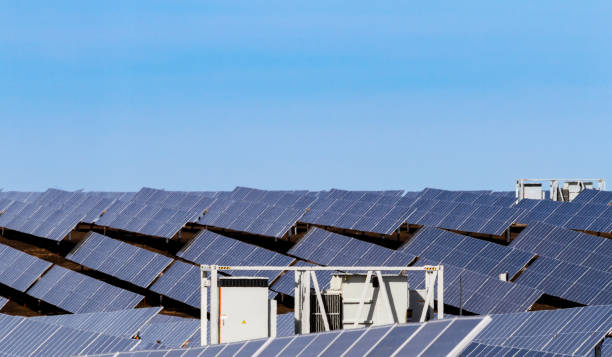Silver in technology, renewable energy, and investment is shaping the future of this historically significant metal. While silver was once the backbone of global monetary systems, today, its value extends far beyond currency. With the rise of solar energy, electric vehicles, and advanced electronics, silver has become an essential industrial material, driving innovations in clean energy and digital technology. At the same time, investors continue to turn to silver as a hedge against inflation and economic uncertainty, reinforcing its role as a key asset in modern finance. As demand for renewable energy solutions and high-tech applications grows, silver’s importance in the 21st-century economy is stronger than ever, ensuring that the “white metal” remains as valuable as gold in shaping the world’s future.

1. Silver in Technology: The Metal of the Future
- Electronics and Semiconductor Applications
- Silver has the highest electrical conductivity of any metal, making it essential in circuit boards, semiconductors, and 5G technology.
- It is used in smartphones, laptops, medical devices, and automotive electronics, ensuring its continued demand in the digital age.
- The Expanding Role of Silver in AI and Quantum Computing
- As artificial intelligence (AI) and quantum computing advance, silver is being researched for its role in superconductors and high-efficiency processors.
- The integration of silver nanowires in flexible electronics and touchscreens could revolutionize wearable tech and next-gen computing.
- Medical and Biotech Innovations
- Silver’s antimicrobial properties make it crucial in wound dressings, surgical instruments, and coatings for medical devices.
- Nanotechnology is enabling silver-based antiviral and antibacterial treatments, with potential applications in fighting drug-resistant infections.
2. Silver in Renewable Energy: Powering the Green Revolution
- Solar Energy (Photovoltaic Silver Demand)
- Silver is a key component in solar panels, where its high conductivity improves energy conversion efficiency.
- The rapid expansion of solar power worldwide is driving record demand for silver, with experts estimating that solar energy alone could account for 20-30% of annual silver consumption in the coming decades.
- Electric Vehicles (EVs) and Battery Technology
- With the rise of Tesla and the global push for EVs, silver is increasingly used in electric vehicle batteries, charging stations, and power inverters.
- The shift away from fossil fuels will significantly increase demand for silver in automotive manufacturing.
- Green Hydrogen and Energy Storage
- Silver plays a role in hydrogen fuel cells, an emerging technology for clean energy storage and transportation.
- Advances in silver-based catalysts could help accelerate the transition to a carbon-neutral energy system.
3. Silver as an Investment: A Hedge Against Inflation and Economic Uncertainty
- Silver vs. Gold: A More Accessible Safe Haven
- Silver, often called the “poor man’s gold,” serves as an inflation hedge and store of value, similar to gold but at a lower price point.
- Investors buy silver bullion, ETFs, and mining stocks to protect against currency devaluation and economic downturns.
- Silver’s Role in Portfolio Diversification
- Unlike stocks and bonds, silver provides a hedge against financial crises, as seen during the 1970s inflation crisis, the 2008 recession, and the 2020 COVID-19 pandemic.
- Some analysts predict silver prices will rise significantly in the coming years, driven by both industrial demand and investment interest.
- The Potential for a Silver Shortage
- Global silver production has not kept pace with rising demand, raising concerns about a supply deficit in the future.
- If silver mining output fails to meet industrial and investment demand, prices could experience long-term upward pressure.
4. Challenges and Opportunities for Silver in the 21st Century
- Market Volatility and Price Swings
- Silver prices are more volatile than gold due to its dual role as an industrial metal and financial asset.
- Speculative trading and manipulation (such as the Hunt Brothers’ attempt to corner the silver market in 1980) add to silver’s price swings.
- New Technologies That Could Replace Silver
- Scientists are exploring alternative materials (such as graphene and copper alloys) to reduce reliance on silver in electronics.
- However, silver’s unique conductivity and chemical properties make it difficult to fully replace.
- The Role of Recycling in Silver Supply
- As industrial demand rises, recycling silver from electronics, solar panels, and medical devices could help sustain long-term supply.
- Advances in silver recovery technology will be crucial in meeting future demand.
Conclusion: Silver’s Bright Future in the Global Economy
Although silver is no longer a currency standard, its role in technology, renewable energy, and investment makes it more valuable than ever. As global industries shift toward clean energy and digitalization, silver’s unique properties will ensure its place as a critical material for the 21st century. Meanwhile, as an inflation hedge and store of value, silver continues to attract investors looking for stability in an era of fiat currency risks and economic uncertainty. Whether in solar panels, electric vehicles, or investment portfolios, silver’s legacy continues to evolve—proving that the “white metal” remains indispensable to the modern world.
